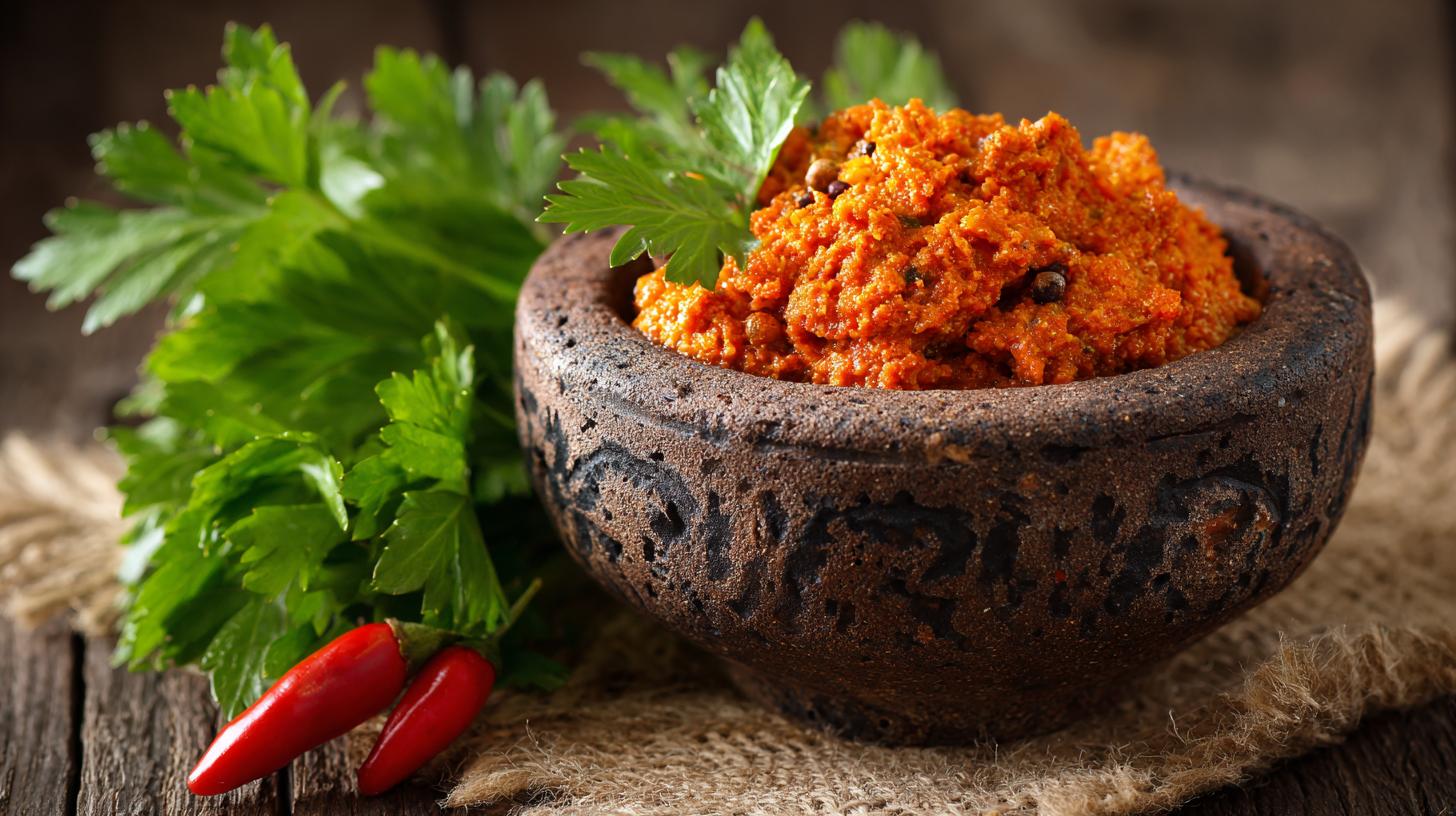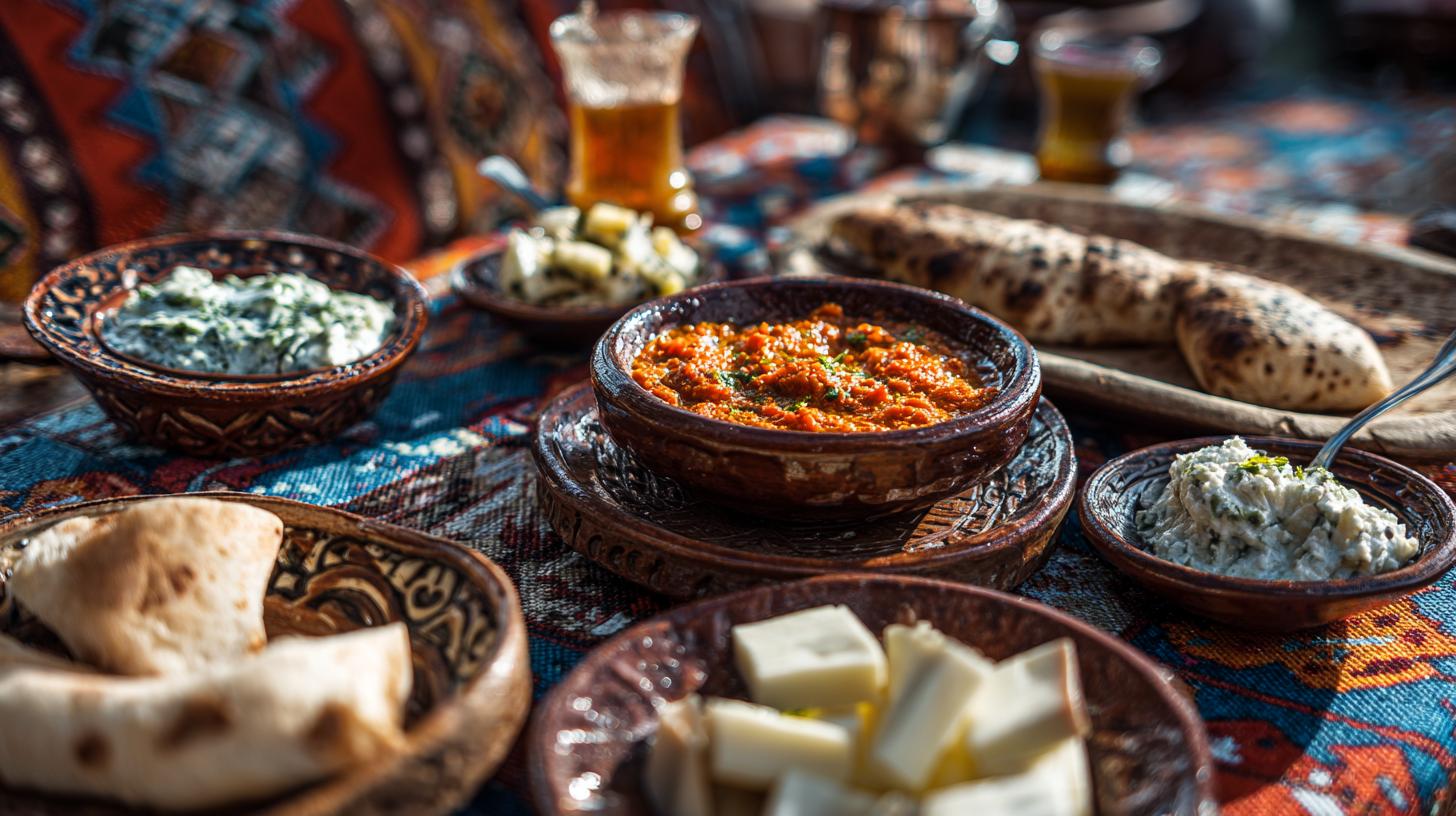Ajika from Georgia is more than just a condiment—it is a vibrant expression of the rich culinary heritage of the Caucasus region. This fiery paste, often packed with a complex balance of heat, herbs, and salt, has been enjoyed by Georgian people for centuries. Whether you’re a food enthusiast interested in global flavors or someone looking to add a new twist to your kitchen repertoire, understanding ajika from Georgia offers a fascinating glimpse into traditional Georgian cuisine and culture.
The origins of ajika from Georgia are deeply intertwined with the culinary traditions of the country’s western regions, primarily Abkhazia and Mingrelia. The word “ajika” itself comes from the Abkhazian language, meaning “salt” or “pepper paste,” which reveals its relationship to essential seasonings. Over time, ajika became a staple seasoning paste that families prepared and used to enhance a variety of dishes—from grilled meats to vegetable stews—infusing them with both heat and a herbal aroma that is uniquely Georgian.
The Ingredients That Define Ajika from Georgia
Understanding ajika from Georgia requires a look at the core ingredients that give it its distinctive flavor profile. Traditionally, ajika is made with a combination of hot red chili peppers, garlic, salt, and aromatic herbs. The particular blend of herbs and spices can vary between regions and even families, but some essential ingredients remain consistent.
- Red Chili Peppers: Fresh or dried, these provide the signature heat and vibrant color that ajika is known for.
- Garlic: Adding pungency and depth.
- Salt: Essential for preserving the paste and bringing the flavors together.
- Herbs: Typically coriander seeds, blue fenugreek, and dill play a key role in the flavor complexity.
- Walnuts (optional): Some recipes incorporate ground walnuts which add texture and a subtle earthiness.
The exact proportions of these ingredients influence the degree of spiciness, sweetness, and aromatic quality of ajika from Georgia, making each batch a unique creation by the maker.
How Ajika from Georgia Is Traditionally Made
Ajika from Georgia is traditionally prepared at home using simple kitchen tools but with much care and attention. The process can be broken down into several steps that highlight both the art and the practicality of Georgian cooking.
| Step | What Happens |
|---|---|
| 1. Selection of Ingredients | Choose fresh red chili peppers and herbs. Traditional recipes call for ripe spices harvested at peak flavor. |
| 2. Drying or Roasting | Chili peppers and herbs might be sun-dried or lightly roasted to deepen their flavor before processing. |
| 3. Grinding | Peppers, garlic, herbs, and salt are ground together using a mortar and pestle or a meat grinder to create a paste. |
| 4. Mixing | Ground walnuts, if used, are added. The mixture is stirred until it forms a thick, spreadable paste. |
| 5. Storage | Ajika is kept in jars, often sealed with oil or vinegar, and stored in a cool place to let flavors meld. |
This handmade preparation method, passed down through generations, ensures ajika’s characteristic fresh and robust flavors.
Variations of Ajika from Georgia Across Regions
Like many traditional foods, ajika from Georgia is not a one-size-fits-all condiment. Different areas put their own spin on the recipe depending on locally available ingredients and flavor preferences. Exploring the regional differences provides insight into how this condiment adapts and evolves while retaining its cultural identity.
Mingrelian Ajika
In the region of Mingrelia, ajika is often made with a thicker texture and includes a generous amount of ground walnuts. The addition of walnuts gives it a nuttier, creamier consistency, which lessens the initial heat but adds complexity. Mingrelian ajika also tends to be more herb-forward, using fresh coriander and sometimes even mint.
Abkhazian Ajika
Ajika from Georgia’s Abkhazia region is known for its fiery heat and pungent aroma. Here, the paste leans heavily into chili and garlic, with fewer fillers. It has a thinner consistency and is typically spicier than its Mingrelian counterpart. The abundance of dried herbs such as blue fenugreek and marigold flowers add a distinctive subtle bitterness that balances the heat.
Adjara’s Softer Style
In the southwestern Georgian region of Adjara, ajika is sometimes made with tomatoes or red bell peppers added, softening the heat and adding a touch of sweetness. This version is more of a sauce than a paste and reflects the local palate, which favors milder flavors with decorative richness.
How Ajika from Georgia Fits into Georgian Cuisine
Ajika from Georgia is not just an isolated condiment; it deeply integrates into the broader spectrum of Georgian food culture. Georgian cuisine is famous for its balance of bold flavors, use of fresh herbs, and layering of tastes, all of which ajika embraces and enhances.
Traditional Pairings
Ajika is often served alongside grilled meats such as kebabs and sausages, where its spicy heat complements juicy, fatty cuts perfectly. It is also spread onto bread or used as a seasoning for stews, soups, and vegetable dishes. In winter months, ajika serves an important role in preserving summer flavors, offering a taste of warmth and heat during cold seasons.
Modern Uses
Today, ajika from Georgia has found its way into contemporary cooking far beyond its traditional uses. Chefs and home cooks alike experiment with ajika as a marinade base, a spice rub, or a powerful addition to dips and dressings. Its robust flavor adds a punch to everything from roasted vegetables to pasta sauces, enabling the condiment to cross cultural and culinary boundaries.
Health Benefits and Nutritional Aspects of Ajika from Georgia

Beyond its culinary appeal, ajika from Georgia offers some nutritional and health-related benefits. Its ingredients are simple but powerful, largely composed of natural spices and herbs known for their medicinal properties.
- Chili Peppers: Contain capsaicin, which is known to boost metabolism, improve circulation, and provide pain-relief benefits.
- Garlic: Renowned for its antiviral and antibacterial properties, garlic supports immune health.
- Herbs like Coriander and Fenugreek: Aid digestion and have antioxidant effects.
- Walnuts (when included): Provide healthy fats and essential omega-3 fatty acids, offering heart health benefits.
Due to its salt content, ajika should be used in moderation, but when balanced within a varied diet, it contributes positively to overall wellness.
Preparing Ajika from Georgia at Home: A Basic Recipe to Get Started
For anyone eager to experience ajika from Georgia firsthand, making it at home can be a rewarding project. Here is a simple recipe reflecting the traditional style:
Ingredients:
- 10-12 dried red chili peppers (milder or hotter depending on preference)
- 5-6 cloves garlic
- 1 tsp salt (adjust to taste)
- 1 tsp coriander seeds
- 1 tsp blue fenugreek (or regular fenugreek if unavailable)
- 1 tbsp chopped fresh dill or parsley
- Optional: 1/4 cup ground walnuts
- 2 tbsp vegetable oil (for preservation)
Instructions:
- Soak dried chili peppers in hot water for about 20 minutes to soften, then remove seeds if a milder paste is desired.
- Toast coriander seeds and fenugreek briefly in a dry pan until fragrant, then grind to powder.
- In a mortar and pestle or food processor, blend softened chilies, garlic, salt, ground spices, herbs, and walnuts until a thick paste is formed.
- Transfer the paste to a clean jar and top with vegetable oil to seal.
- Store in the refrigerator and allow to sit for 1-2 days for flavors to meld before use.
This straightforward preparation invites personalization, and with practice, you can tailor ajika to your preferred heat level and flavor intensity.
The Role of Ajika from Georgia in Cultural and Social Contexts
Ajika from Georgia is not only a food product but also a cultural emblem. It symbolizes hospitality, craftsmanship, and the importance of family traditions in Georgian society. Making ajika is often a communal activity, especially during harvest seasons when spices and herbs are abundant. Elders pass down their recipes and techniques to younger generations, preserving the connection to their roots.
Guests at a Georgian table are usually offered ajika along with bread and wine, demonstrating warmth and generosity. This fiery paste acts as a bridge between people, bringing together taste and tradition in every shared meal.
Where to Find Ajika from Georgia Outside Its Homeland
As Georgian cuisine gains international recognition, ajika from Georgia is becoming more accessible globally. Specialty food stores, markets with Eastern European or Caucasian products, and online retailers often offer jars of authentic ajika. When purchasing, it is helpful to check for original ingredients and traditional preparation methods to ensure an authentic experience.
For those without access to authentic ajika, the home preparation method outlined earlier provides an excellent gateway. Experimenting with ajika also encourages a deeper appreciation of Georgian culinary arts and the culture’s intricate relationship with its food.
Pairing Ajika from Georgia with Other Foods and Drinks

Ajika’s bold and spicy character lends itself to a variety of food pairings. Traditional Georgian dishes, such as khachapuri (cheese bread), khinkali (dumplings), and various meat stews, benefit from a dollop of ajika to brighten and spice the palate.
| Food | How Ajika Enhances It |
|---|---|
| Grilled Lamb or Pork | Adds heat and herbal complexity that cuts through the richness. |
| Vegetable Stews | Introduces piquancy and balances sweetness with spiciness. |
| Bread and Cheese | Provides a spicy contrast to creamy or mild dairy elements. |
| Rice and Legumes | Elevates otherwise plain bases with aromatic intensity. |
In terms of drinks, ajika pairs nicely with Georgian wines, especially dry reds like Saperavi, whose fruity and earthy qualities complement the condiment’s heat and herbaceous notes. The traditional wine ceremonies of Georgia make it a natural partner to meals enriched by ajika.
The Evolution and Modern Trends Surrounding Ajika from Georgia
With globalization and culinary exploration, ajika from Georgia is evolving. Modern chefs experiment with fusion variants, blending ajika with ingredients such as tomatoes, smoked paprika, or even fermented bases to create new taste experiences. Some commercial producers have started bottling ajika in versions suitable for mass markets, adjusting heat levels and consistency for wider appeal.
At the same time, there is a resurgence of interest in preserving original recipes and artisanal preparation. Food festivals and cultural events in Georgia and abroad celebrate ajika, educating people about its history and role in Georgian life.
For food lovers wanting to explore or recreate ajika from Georgia, the past and present blend seamlessly, opening doors to a spicy, deeply aromatic world that continues to inspire.
Final Thoughts on Ajika from Georgia
Ajika from Georgia represents much more than just a spicy seasoning; it is a story of a people’s connection to their land, history, and food culture. The balance of fire and flavor found in ajika encapsulates the soul of Georgian cooking—a cuisine that prizes boldness, warmth, and communal spirit. Whether you encounter ajika in a traditional Georgian feast or prepare it at home, it invites a deeper understanding of a region where every bite resonates with heritage.
Trying ajika from Georgia is an invitation to experience the vibrancy of the Caucasus, a culinary journey that balances heat and harmony with every spoonful. It stands as an enduring example of how simple ingredients can be transformed into something rich, complex, and full of character—worthy of exploration by anyone passionate about diverse and authentic tastes around the world.